29 Evidence-Based Benefits of Strawberries
What are Strawberries
What do you think of when you hear the word “strawberry”?
The lusciousness of the fruit, its sweet tangy flavor, its brilliant pop of color, or its cute heart shape?
Or the many health benefits it provides?
This red fruit might be tiny, but the reasons to eat it are many.
It’s the most preferred fruit of all among children aged seven to nine, but it’s definitely a popular choice among adults, too.
Not only is it delicious and easy to eat, but it can also be used in many different ways: it can be used in desserts, infused in certain dairy products, pickled or used for flavoring, dipped in cream or chocolate, or eaten in a number of different, delicious ways.
You might think that something that tastes so good can’t possibly be good for you, but strawberries are one of the best fruits for your health and well-being.
Strawberries are produced all over the world, with the United States being the largest producer and consumer.
While it is a perennial plant, it doesn’t do well under freezing temperatures, which is why several European countries produce strawberries in the wintertime using greenhouse technology.
Because of this, strawberries can be found in the markets almost year-round in most places.
This means that you can more or less enjoy strawberries any time of the year! (1)
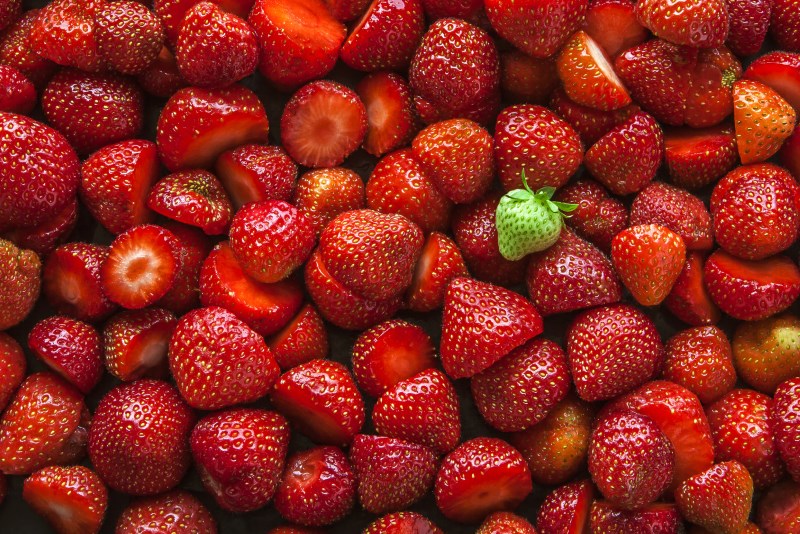
History
Where did strawberries come from?
When did people begin eating them?
We know through the words of such poets like Ovid and Virgil that even ancient Romans enjoyed strawberries but perhaps only for their aesthetic and medicinal qualities.
They believed strawberries were the answer to many of the maladies that plagued people.
Because of its red color and heart shape, they even used it to symbolize Venus, the Goddess of Love.
In medieval cathedrals and churches, you can even see strawberries carved into pillars to represent righteousness.
Since the 1300s, when the French brought strawberries from the wild to their garden, Europeans have cultivated these aromatic fruits, but the ones we see in the market today are a hybrid variety.
European strawberries tended to be smaller and less flavorful than those found in the New World.
In 1624, the Virginia strawberry was taken to France.
Then in 1712, a larger variety from Chile was taken to France by a naval officer.
These two varieties were both widely cultivated, and crossbreeds soon began to appear, giving rise to the strawberries we know and love today.
In the 1700s, these garden strawberries were exported to America from France, and cultivation began in the United States in the early nineteenth century.
One of the most well-known cultivars in America was “Hovey,” developed by plant breeder Charles Hovey in 1838.
Since then, breeding and selection of strawberries, research and development techniques, and overall production and consumption of strawberries have improved all over the world.
Some people maintain that strawberries derive their name from the grass straws on which the youth of England sold wild strawberries.
Others claim that the word comes from “strewn berry,” since the fruits were strewn on the ground as they spread on their runners.
Some even say that the name comes from the fact that many growers use a straw for mulch during the cold season (2, 3, 4).
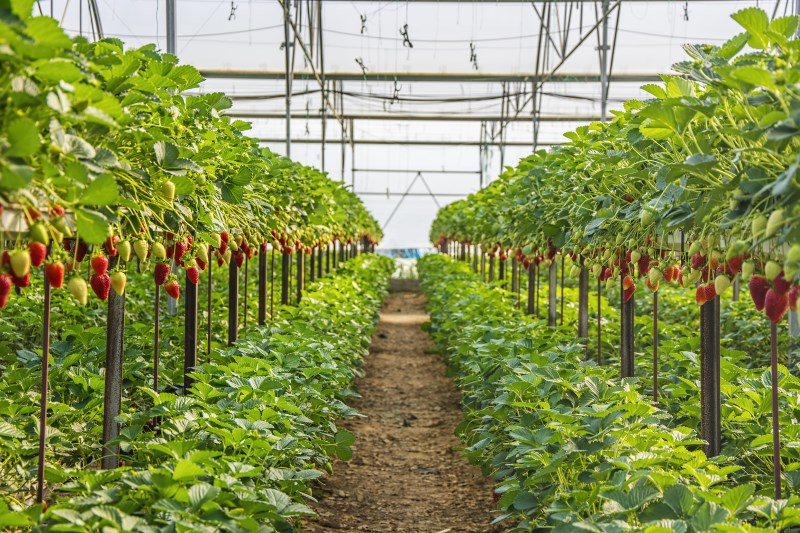
How Strawberries Grow
Strawberries are pretty easy to grow.
If you don’t want to go all the way to the market when you want strawberries, you might want to grow some strawberry plants at home!
The best time to plant them is spring or autumn, depending on your local climate.
Strawberries thrive in rich, fertile soil, so you can mix in compost or manure to the soil before planting.
Do this especially if the soil is contaminated with lead or other such chemicals.
Most types of strawberries grow better when they’re at least eight hours of exposure to sunlight, but a type called “alpine strawberries” can be grown in partial shade.
They prefer mildly acidic soil with a pH of between 5.5 and 6.8.
If the soil where you live is more basic in nature or you don’t have gardening space, consider planting in pots or other containers.
While planting strawberries, make sure you don’t plant different ones too close together.
Plant each different plant around eighteen inches away from the others.
If you’re planting varieties that don’t produce many runners, you may even space them only six inches apart.
If you’re growing strawberries in rows, to make it easier to tend to the plants and harvest the berries, space each row around thirty inches away from the other.
Dig a hole that is big enough for the roots of the plant; then spread the root out inside the hole and see that the crown rests on top of the soil.
If the crown is below the soil, the leaves, flowers, and fruits won’t come up, and the strawberry plants might rot; if the crown is too far above the soil, the plants can lose moisture and wilt.
Make sure the plants are firmly placed and remember to water well.
If you have space, do this upon raised beds.
Put landscape fabric underneath the bed, and surround it with rot-resistant wood on the sides.
Make the bed higher than eight inches and design a width up to three feet.
Then fill the bed with a combination of one-third compost and two-thirds topsoil.
Then commence the same process as mentioned above.
Do be aware that planting strawberries on the ground makes them vulnerable to slugs and fungi.
Around the time that the fruit begins to ripen, slugs may chew holes in the berries and ruin the crop.
If you experience that problem, you might want to switch to plastic mulch instead of organic mulch.
Also, trim the foliage of the plants to protect them from fungal diseases that could affect leaves.
To keep birds from eating the berries, cover the plant with light netting once the ripening process begins.
If you don’t have garden space to grow strawberries, you can always use containers.
Strawberries don’t have deep roots, so by filling up a box or barrel with soil, you can grow your very own strawberries.
Of course, a big container is the best to work with, although it doesn’t have to be filled with soil completely.
In fact, you can fill the bottom third with empty bottles and jars and cover that up with landscape fabric before adding soil.
By doing this, you can keep your container light enough to move around to get the best sunlight or avoid bad weather.
Strawberries can even grow in strawberry jars, hanging baskets, or window boxes!
Buy baskets that are lined with coir or peat moss, or you can even get ones that water automatically.
You can plant strawberry plants closer together than you normally would.
Because of the disadvantages of this technique over planting strawberries in the ground, take certain steps to protect your plants.
You might want to use drip irrigation or soaker hoses to ensure enough water is provided to the plants, or you might want to place water-absorbing crystals on the soil.
Every couple of weeks it would be a good idea to use a fertilizer solution to promote plant growth.
According to the weather and the season, you can also vary the location of the containers (5, 6, 7).
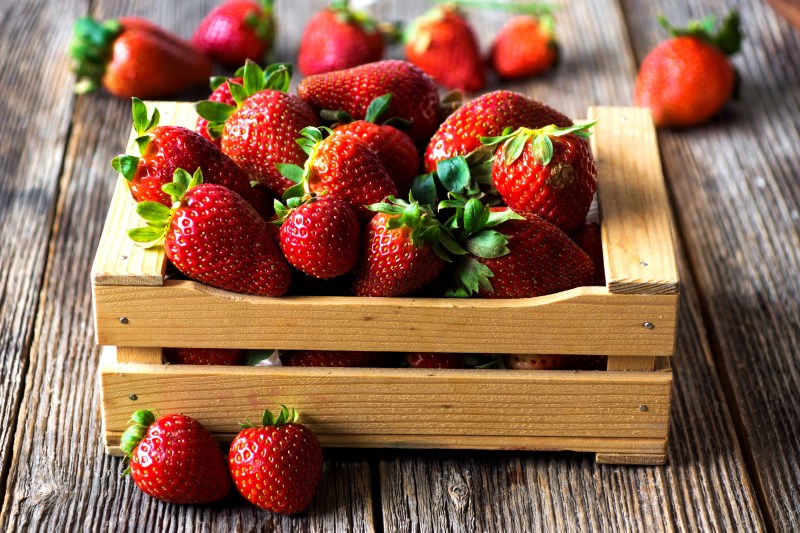
Varieties
Strawberries come in hundreds of different varieties, but each one can be categorized into three distinct types: June-bearing strawberries, Everbearing strawberries, and Day-neutral strawberries.
June-bearing strawberries are the most popular kind.
Strawberries from these plants are mostly harvested in the month of June, which is how it gets its name.
Nonetheless, its varieties can be classified as “early season,” “early mid-season,” “mid-season,” “late mid-season,” and “late season,” depending on which time of the spring or summer the fruit is usually harvested.
June-bearing varieties usually bear fruit for up to two or three weeks and produce berries of the largest size in comparison.
Most are garden strawberries, including Benicia, Camarosa, Camino Real, Chandler, Hood, Sweet Charlie, Ventana, Lucia, and Ruby June.
Everbearing strawberries produce up to three harvests per year if environmental conditions are favorable.
Usually, they are harvested twice, once in spring and once in late summer or early fall.
Everbearing varieties have fewer runners than June-bearing varieties.
They’re often planted in areas where there isn’t ample space.
Day-neutral varieties are also planted where space is limited.
The term “day-neutral” derives from the light sensitivity of these plants.
They’re different from the other two kinds because the strawberries they produce are quite small in size, often smaller than one inch in length or diameter.
Also unlike the other two kinds, day-neutral strawberry plants produce a good yield right from the first year that they’re planted.
The fruit when the temperature is ideal, which for them is around 35° to 85°F.
Therefore, day-neutral strawberry plants provide a steady supply of strawberries year-round except when frost sets in.
A few examples of day-neutral strawberry varieties are Albion, Aromas, Keoki, Monterey, Portola, Seascape, and Sweet Ann (8, 9).
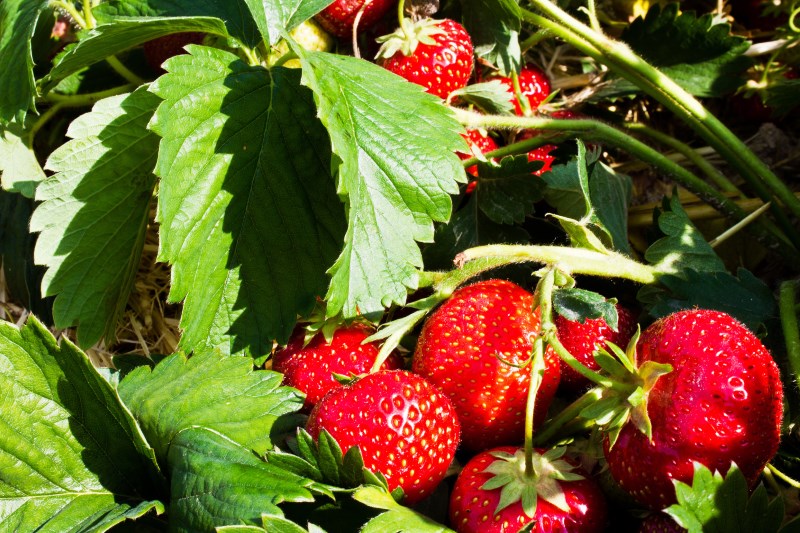
Interesting Facts
- Strawberries are actually members of the Rosaceae, or rose family! They are the edible fruit of the sweet-smelling flowering plant genus Fragaria.
- Strawberries aren’t really berries but accessory fruits, which means that the flesh of the strawberry comes from adjacent tissue exterior to the carpel.
- Strawberries are the only fruit that has seeds on the outside. Each of these “seeds,” which number over two hundred, is actually one of the ovaries of the flower, with a seed enclosed within.
- Among all fruits, strawberries are the first to ripen each spring.
- Madame Tallien, a Spanish-born French woman of prominence at the court of Emperor Napoleon, used to bathe in strawberry juice. She used around twenty-two pounds of fresh strawberries each time.
- In Belgium, an entire museum is dedicated to strawberries. At Le Musee De La Fraise, you can learn the history of strawberries, how they are cultivated, and purchase products made from local strawberries, such as jams and beer. If you love strawberries, you should stop by! (10)
- You may have seen or eaten the common small type of strawberries, but sometimes they come in much larger sizes, measuring up to ten centimeters in length.
- California produces 83 percent of the U.S. berry production on more than 24,500 acres, which amounts to around two billion pounds of strawberries each year. If each of those berries was placed end to end, it would form a line that would go around the world fifteen times.
- In France, traditional newlyweds drink a creamy strawberry soup for breakfast on the day of their wedding. Strawberries are considered aphrodisiacs and therefore helpful for a newly married couple.
- 94 percent of households in the United States consume strawberries! An average American eats about three and a half pounds of fresh strawberries each year.
- The popular strawberry shortcake dessert was invented when American Indians introduced the colonizers to strawberries. The Indians would mix the berries with cornmeal and bake it; after trying this combination, the European colonizers tried their hand at it and came up with strawberry shortcake!
- Strawberries are one of the few plant-based foods that have their entire genome mapped (11).
- The ancient Romans believed that strawberries could help cure a number of conditions, from bad breath to depression to chronic fainting to fevers and sore throats.
- The state of Delaware celebrates Strawberry Week from May 21 to May 27 every year, when all school districts participate in a sort of festival.
- There is no U.S. state or Canadian province that doesn’t produce strawberries! (12, 13)
Nutritional Facts
Strawberries are full of goodness, which they derive from all the nutrients they contain.
They have lots of important vitamins and minerals and are dense with many different amino acids.
Shown below are the nutrients present in strawberries and the percentage of the daily recommended allowance for each nutrient that can be obtained by eating a full cup of fresh strawberries.
Principal Nutrients
- 6 Calories (2%)
- 1 gram Protein (2%)
- 5 gram Total Fat (1%)
- 8 milligrams Omega 3 Fatty Acids
- 137 milligrams Omega 6 Fatty Acids
- 7 grams Carbohydrate (4%)
- 3 grams of Dietary Fiber (12%)
- 4 grams Sugar
Minerals
- 3 milligrams Calcium (2%)
- 6 milligrams of Iron (3%)
- 8 milligrams of Magnesium (5%)
- 5 milligrams of Phosphorus (4%)
- 233 milligrams of Potassium (7%)
- 2 milligram of Zinc (1%)
- 1 milligram of Copper (4%)
- 6 milligrams of Manganese (29%)
- 6 microgram of Selenium (1%)
- 7 microgram of Fluoride
Vitamins
- 4 milligrams Vitamin C (149%)
- 4-milligram Vitamin E (2%)
- 3 micrograms of Vitamin K (4%)
- 6-milligram Niacin (3%)
- 1-milligram Vitamin B6 (4%)
- 5 microgram Folate (9%)
- 2-milligram Pantothenic Acid (2%)
- 7-milligram Choline
Amino Acids
- 2 milligrams Tryptophan
- 4 milligrams Threonin
- 3 milligrams Isoleucine
- 7 milligrams Leucin
- 5 milligrams Lysine
- 0 milligrams Methionine
- 1-milligram Cystine
- 9 milligrams Phenylalanine
- 4 milligrams Tryrosine
- 9 milligrams Valine
- 6 milligrams Arginine
- 2 milligrams Histidine
- 2 milligrams Alanine
- 226 milligrams Aspartic Acid
- 149 milligrams Glutamic Acid
- 5 milligrams Glycine
- 4 milligrams Proline
- 0 milligrams Serine
Health Benefits of Strawberries
Strawberries and Free Radicals
Strawberries are an incredibly rich source of various antioxidants.
They contain flavanols, gallic acid, quercetin, and many other antioxidants (14).
They also have notable amounts of vitamin C, vitamin A, and manganese (15).
The reason antioxidants are so important to your health is their function in eliminating free radicals in the body.
Free radicals form in the process of oxidization and have a missing electron; these unstable radicals can cause a whole lot of trouble in the body, mainly due to inflammation.
From early aging to chronic diseases, free radical accumulation can cause much damage, but antioxidants stabilize free radicals and relieve oxidative stress.
By doing so, the number of free radicals in your body is regulated, and you can continue to live a healthy life.
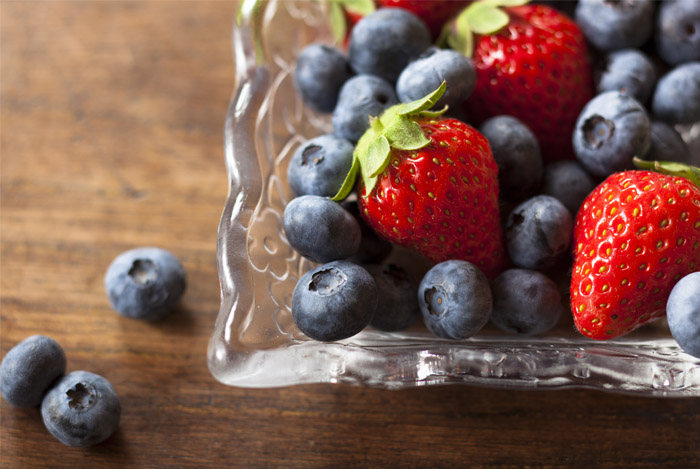
Heart Disease and Strawberries
One of the major ways antioxidants protect the body is by decreasing the level of inflammation within the body, which is a major cause of heart disease (16).
Oxidative stress damages your body and can be especially tough on your heart.
Antioxidants fight the oxidative process, protecting your heart from resultant damage (17).
Furthermore, it lowers levels of low-density lipoprotein cholesterol, which can lead to a buildup of plaque in the arteries and create dangerous blood clots that can possibly interfere with the passage of blood to the heart, the brain, or other organs.
Strawberries also have fiber, and studies have shown that a high-fiber diet could decrease chances of heart diseases by up to 40 percent (18).
Therefore, chances of suffering from a heart condition can lessen significantly if you add more strawberries to your diet.
Brain Health
Without a healthy, well-functioning brain to complement it, a fit body is hard of any use.
As you grow older, your mental faculties may diminish, and you may find yourself facing cognitive decline.
Memory loss, poor coordination, and neurodegenerative diseases represent a poor picture.
By eating strawberries on a regular basis, however, you can protect yourself from unhealthy brain aging.
Strawberries have lots of flavanols, particularly anthocyanins, which are great for your brain.
Studies have shown a link between consumption of berries and a reduction in oxidative damage in the brain, proving that the antioxidants in strawberries can help keep your brain young and alert (19).
Manganese, too, has an important antioxidant role in your brain, and it also stimulates neurotransmitters to be speedier and more efficient in conducting impulses (20).
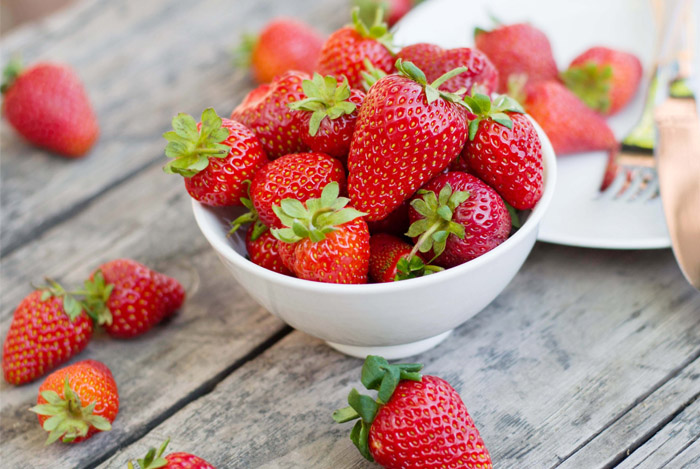
Skin Health
The importance of having healthy skin should not be underestimated.
Poor skin is not only physically inconvenient by being itchy or painful but can also hamper all aspects of your life.
It can affect your self-esteem, inhibit professional opportunities, and make your social life tougher.
As you age, pollutants and other factors, such as stress, a poor diet, and exposure to UV radiation, can make your skin age faster than normal.
Strawberries, with their antioxidants and fatty acid content, can fight inflammation and photo-aging to give you firm, youthful skin (21).
Vitamin A and vitamin C have a range of functions for skin health, such as regulating hydration, sebum production, and collagen synthesis (22).
Vitamin C, in particular, reduces spots, makes the skin more elastic and prevents rashes (23).
Strawberries and Cancer
Cancer is a scary word, and it is day-by-day becoming a harsh reality for more and more people across the world.
Cancer occurs when there is rapid and abnormal growth of cells in certain regions of the body.
The treatments for cancer aren’t absolute and are often expensive and painful.
Preventing cancer is a much better option and one that can be accomplished with the help of strawberries.
Research has shown that strawberries can inhibit the formation of cancerous cells right from the beginning and also impede the rate of growth and expansion of cancerous tumors (24).
A reason behind strawberries’ success at stopping cancer is thought to be anthocyanins.
A study showed how a group of patients who received strawberry extracts fared much better than ones who didn’t (25).
Liver cancer, colon cancer, skin cancer, and other cancers can, in fact, be prevented with strawberries.
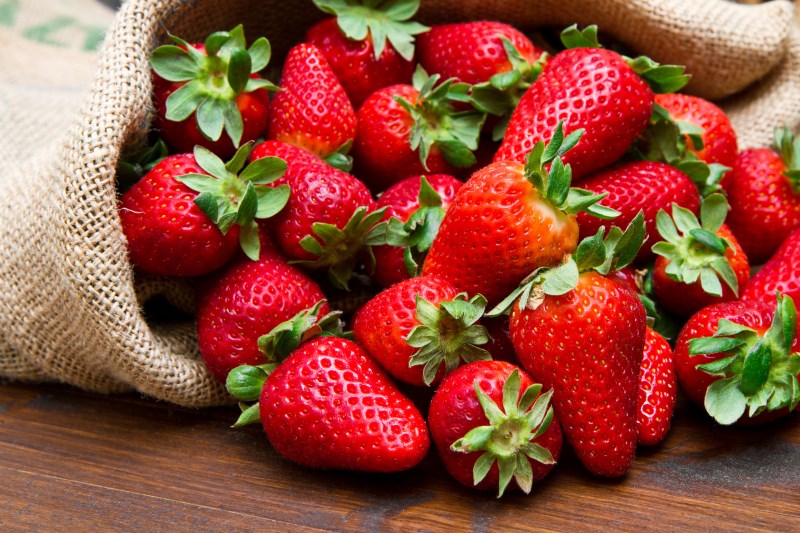
Strawberries and Pregnancy
A healthy pregnancy is important for both the unborn child and the mother carrying that child.
If a pregnancy doesn’t go as planned, the baby can be born with a defect that will negatively impact his/her life, or the safety of the mother or the child can be compromised.
Strawberries have a relatively high folate content, which aids cell function and promotes growth.
Folate can help prevent defects in the baby’s brain and spine if pregnant women consume it by 50 to 70 percent.
Without folate in your diet, your baby suffers the risk of having spina bifida, anencephaly, and other defects.
There might even be a need to abort the child (26, 27).
If you’re pregnant or planning to get pregnant anytime soon, strawberries are a great addition to your diet (28, 29, 30, 31).
Bone Health
Bones support our overall structure and are important for movement, blood cell production, and protection of vital organs.
Manganese is a very important mineral for bone growth, especially for children, and for adults and the aging.
It is important for maintaining mineral density and preventing osteoporosis.
Many postmenopausal women have a manganese deficiency and therefore have weak bones.
Manganese can strengthen these bones, particularly the spine, which provides the frame for your torso (32).
Having healthy bones can help you move comfortably and prevent fractures.
It can also help you avoid painful sprains caused by arthritis (33).
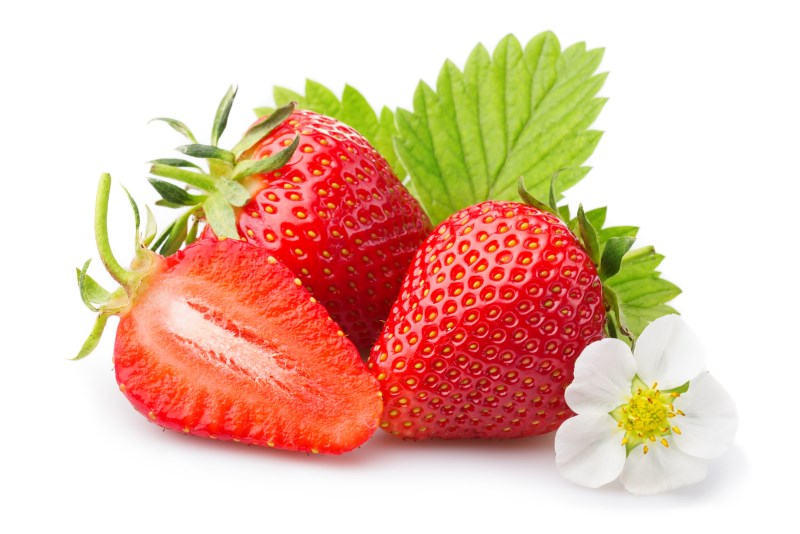
Strawberries and Diabetes
Strawberries have manganese, which is very effective in regulating your blood sugar level.
It controls the secretion and production of insulin, which is very important for blood glucose.
Because of this, there are fewer spikes and inconsistencies in your blood sugar level, which makes you less susceptible to diabetes (34, 35).
Similarly, strawberries are a rich source of fiber, which has been shown to slow down the process of your digestive system breaking down carbohydrates and absorbing sugar.
Levels of sugar in the bloodstream are then controlled.
Strawberries and Digestion
During the process of digestion, all nutrients required by the body are absorbed.
Therefore, the digestive system is also closely related to the immune system.
If it cannot do its job properly, the body won’t be equipped with the nutrients to fight against bacteria, foreign bodies, and cell mutation (36).
Contrary to popular thinking, around 90 percent of serotonin is produced in the digestive tract and not in the brain (37), which is why the health of the digestive system affects your mood (38).
The fiber found in strawberries helps healthy bacteria in the colon to thrive (39, 40).
Folate has been shown to also help by preventing colorectal cancer (41).
Manganese helps in the digestion of fat, lessening chances of constipation and bowel discomfort.
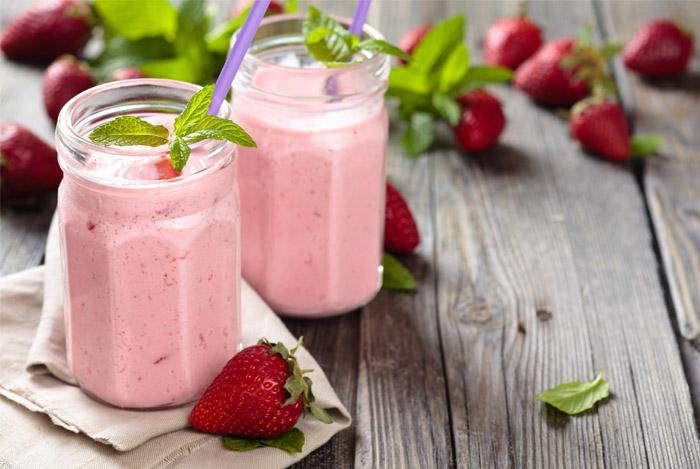
Strawberries and PMS Symptoms
PMS can be very bad at times.
Moodiness, hypersensitivity, food cravings, and cramps can seriously affect you.
Eat lots of strawberries and your periods will be much easier to bear (42).
Strawberries and Epilepsy
Epilepsy is a chronic disorder that affects the brain. It is characterized by recurrent epileptic seizures.
Anyone can develop epilepsy at any point in their lives, although it is most commonly seen in children and the elderly.
Epilepsy not only hampers your everyday activities to some extent, but it also requires expensive medical or therapeutical care to treat and can sometimes lead to death because of complications.
Research indicates that low levels of manganese in the diet can be a cause behind epileptic seizures (43).
With strawberries, you can get more manganese in your diet and contribute to reducing your chances of developing epilepsy.
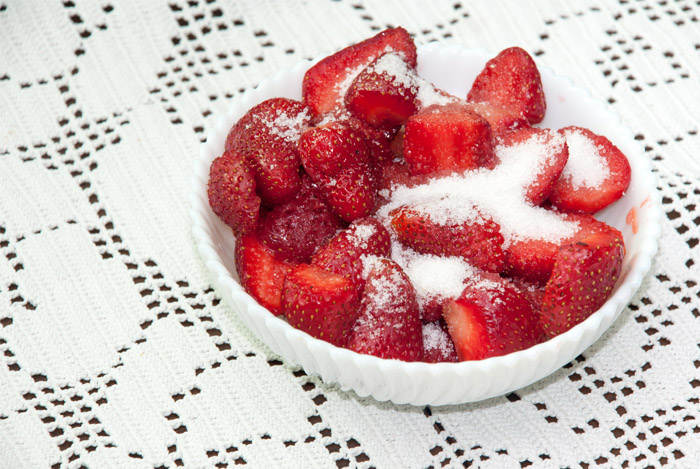
Strawberries and Vitamin Absorption
Your body needs vitamins to function properly.
Different vitamins have specific roles in maintaining your body’s health.
Not getting enough vitamins can lead to deficiencies that could then cause various illnesses and disorders.
Strawberries might not give you every kind of vitamin your body needs, but they do have manganese that can help absorb those vitamins from other food sources (44).
Manganese helps in the enzymatic reactions that help absorb vitamins and use them properly to maintain the body’s health.
By eating strawberries regularly, you can ensure that your body is absorbing vitamins efficiently and satisfying nutritional requirements.
Thyroid Health
Your thyroid gland takes iodine from the foods you eat and then uses it to make, store, and release thyroid hormones into your body.
These hormones are integral to your health since they affect almost all the tissues in your body and are very important for regulating your body’s functions.
They affect your breathing, heart rate, body temperature, cholesterol levels, body weight, menstrual cycle, muscular strength, and many such other functions.
Strawberries have manganese, which is an essential component of thyroxine, and it also helps in thyroid hormone homeostasis (45).
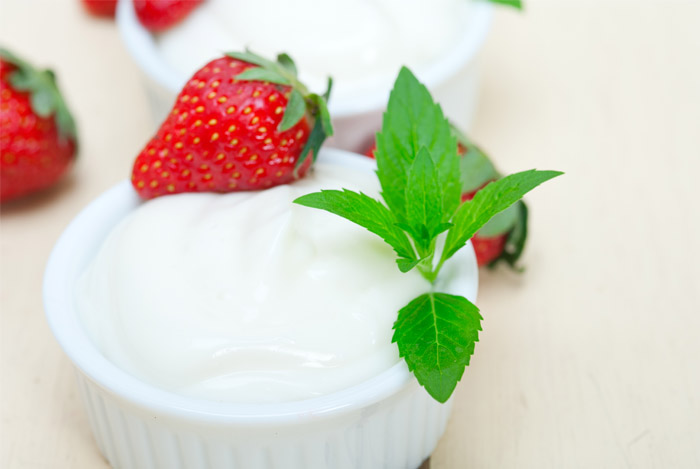
Strawberries and Metabolism
By regulating your body’s glucose metabolism, manganese helps ensure that your body’s energy levels are healthy and all your organs are functioning efficiently (46).
This ensures there isn’t excessive glucose buildup in the body and that you don’t develop hyperglycemia.
Similarly, potassium, which is also found in strawberries, aids in the metabolic processing of several nutrients, such as fats and carbs.
Therefore, it becomes very important in helping your body make use of all the nutrients it takes in.
It also assists in protein synthesis, which means it helps your cells grow and tissues regenerate (47).
Strawberries and Muscles
Potassium is needed by your muscles to contract and relax properly (48).
Muscle cells have a lot of potassium ions, so you need to be taking in an adequate amount of potassium to make sure you don’t get muscle disorders.
It also makes sure the connective pathway between your muscles and your brain or spinal cord is healthy so that you have fast reflexes.
It also helps you avoid getting hypokalemia, which is muscle cramping (49).
Additionally, it functions as a vasodilator during exercise, boosting strength (50).
If you don’t have enough potassium, your muscles might even become paralyzed.
With lots of strawberries in your diet, you can see to it that your muscles are fit and strong.
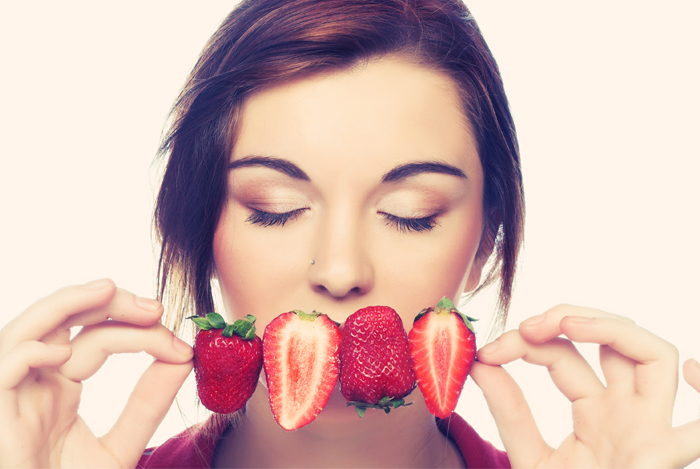
Mood and Emotional Disorders
Anxiety and stress can really take a toll on your life.
Anxiety can make you restless, full of tension, and give you an unrealistic view of life.
Stress can contribute to many health problems, such as insomnia, high blood pressure, obesity, and diabetes.
By regulating certain hormones, such as cortisol and adrenaline, potassium can greatly alleviate your stress and anxiety levels (51).
Many women suffer from depression after giving birth.
Strawberries also have a good deal of folate, which is excellent for dealing with perinatal depression (52).
Strawberries and Kidney Disorders
A healthy level of potassium in your diet is important for balancing sodium in your body and thus helping your kidneys do their job efficiently.
Your kidneys use a combination of sodium and potassium to pull water from cells into the bloodstream and then lead excess fluid to your bladder.
Potassium depletion would mean that your kidneys couldn’t function properly, which would lead to high blood pressure (53).
Get some of your potassium from delicious strawberries because without it in your diet you are susceptible to kidney damage as well as vessel ruptures and strokes and heart attacks.
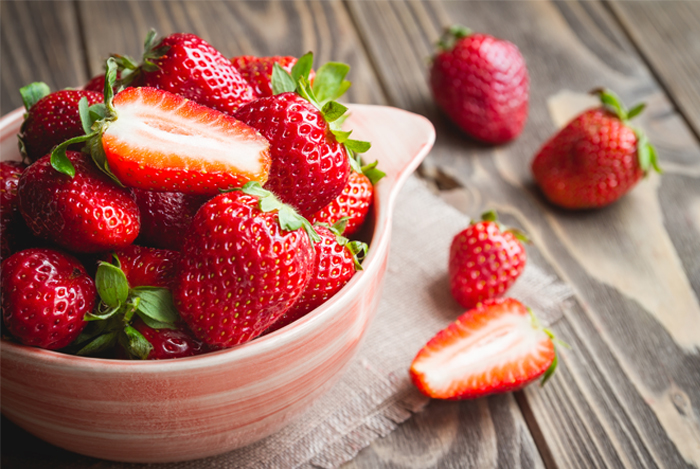
Balance of Fluids in Your Body
Potassium functions as an electrolyte in your body (54).
Electrolytes are important to make sure there is a proper balance of fluids in your cells according to the function of each cell.
They are also of paramount importance in transmitting electrical charges in the nervous system.
This means that eating strawberries also improves your nervous reflexes.
By balancing the amount of water in your cells, it also ensures that the concentration of salts, sugars, and other chemicals inside the cell is the same as the tissue fluid outside (55).
Therefore, strawberries can also contribute to ensuring that your cells work properly.
Eyes Health
Macular degeneration is the deterioration of part of the retina, the light-sensing tissue at the back of your eye.
It often develops as people grow older and impairs their central vision, even blinding people in many cases.
Studies show that people consuming lots of folates had a reduced risk for acquiring age-related macular degeneration (56).
By eating lots of strawberries as you age, you can ensure that your eyes are healthy and your vision sharp.

Strawberries and Colon
The colon is very important in maintaining your health.
It absorbs water, electrolytes, and vitamins and also stores fecal matter before it is dispelled.
If the colon isn’t healthy, waste matter and toxins won’t be removed properly from the body.
Oftentimes, compromising colon health leads to colorectal cancer.
Aside from periodic colon cleansing, it also important to have enough folate in your diet.
Folate has been shown to improve your colon health to a significant degree and is reputed for decreasing risks for colorectal cancer (57, 58, 59).
If you regularly eat strawberries, you can make sure that your folate requirements are being fulfilled, and that your chances of developing colorectal cancer are minimized.
Strawberries and Male Fertility
Infertility is a widespread problem and often involves an issue with male sperm cells.
For couples trying to become parents, not being able to conceive can be very frustrating.
Male infertility can occur because of low sperm production or poor sperm function.
Many studies have shown a correlation between healthy levels of folate in the body and the improvement of sperm health and function (60).
A deficiency of folate leads to a defect in the chromosomal structure of sperm cells, which reduces its ability to fertilize an egg cell (61).
By adding folate to their diet, infertile males can improve sperm motility and successfully conceive a child (62).
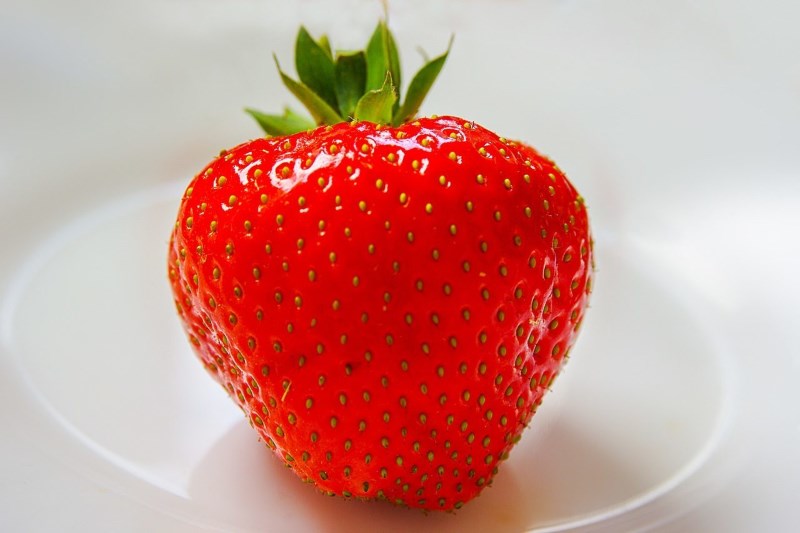
Strawberries and Fiber
Strawberries are a great source of dietary fiber, which can help control blood sugar, improve heart health, and reduce chances of strokes.
One of its most important functions is in maintaining healthy bowels.
Fiber adds more bulk to your stool and makes it softer so that it can be excreted easily.
It also prevents hemorrhoids in the intestines and reduces the risk of inflammation of polyps, also known as diverticulitis, by up to 40 percent (63, 64).
Folate can also help reduce the chances of irritable bowel syndrome, which often involves abdominal pain, diarrhea, or constipation.
Strawberries and Weight Loss
A great plus in eating foods with a high fiber content is that they tend to be filling (65).
On top of that, strawberries have very few calories.
So you can eat a lot of strawberries, get all the health benefits mentioned above, and actually lose weight in the process!
By improving satiety, strawberries prevent you from unhealthy snacking between meals.
Not eating more than you need and avoiding junk food will help you lose and maintain healthy body weight and improve your social and professional life.
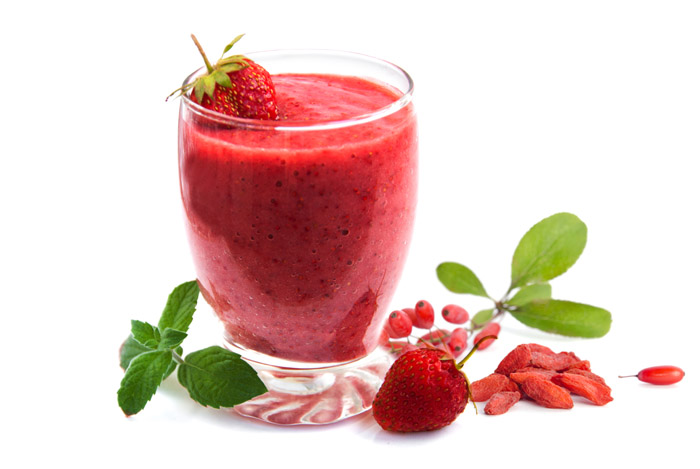
How to Buy and Store
You can buy strawberries just about any time of the year, but if you’re looking for the best, freshest, naturally grown strawberries, late spring is still the time to start strawberry shopping.
Different varieties are available at different times, so you can look for those that are ripening in that particular time of the year.
Look for a bright red color; if your strawberries have white areas, you know that they were picked before ripening, but strawberries can keep getting darker even after being picked with no change in flavor (in fact, they might lose some of their acidity).
So try to buy local strawberries if possible because the red berries you choose will likely be ripe and sweet.
If the berries have been brought in from the outside, chances are they were picked early to increase shelf life.
It might be a better idea to buy from an organic seller or a farmer’s market since they will sell fresh strawberries that haven’t been colored or injected with something to make them last longer.
They will also most likely be local, and you might get better-tasting strawberries.
If the place where you’re buying the berries allows you to sample a few, taste some and make your decision.
It’s not foolproof since berries that look similar can taste different, too, but it increases your chances of getting good ones.
Another way is to smell the berries.
If they have a sweet strawberry smell, you may want to purchase them.
If they don’t give off that fragrance or smell like they’re wasting, it’d be best to avoid that bunch.
Size is not usually of much importance, but you should know that smaller berries tend to be more flavorful, although their bottoms might be harder.
The trick is to get the Goldilocks size—one that is sweet but not tough.
If you’re buying strawberries in a packet, be careful since you won’t have the liberty to inspect each one properly.
Stay away from moldy containers, which can lead to infected berries and food poisoning.
Make sure the packaging is not so tight as to crush the berries, and also check that you aren’t being duped into purchasing spoiled berries hidden by a few good ones on top.
If you’re picking individual strawberries from a container, avoid the ones in the bottom since they will have bruised by the weight of the others (66).
Regarding storage, remember that strawberries are a delicate fruit.
Unless you plan on eating them right away, don’t wash strawberries.
If you’ve already done so, pat the berries dry with a paper towel because strawberries absorb moisture and get sludgy and are also more vulnerable to mold when washed and stored.
Wash the strawberries right before you eat them, though, either using just water or a vinegar wash and use your finger to scrub off dirt and bacteria.
If you see a berry with mold on it, remove it immediately to avoid having the mold spread to all other strawberries.
Don’t pluck off their stems until you’re ready to eat either since doing so will shorten their shelf life.
If you want to eat the berries the very day you purchase them, you don’t have to worry about storage and can leave them at room temperature.
If not, then store the berries in your refrigerator’s crisper drawer — the one used for fruits and vegetables.
This will help retain moisture and keep away humidity.
Don’t wash or cut the berries, and place them in a single layer in a container lined with paper towels (67).
You can also freeze your strawberries to last longer.
Another way to prolong storage time is to vacuum seal them.
This will extend storage time to a couple of days more.
If you wish to use them in a dish later, you may want to cut them that way before freezing since they will be mushy and difficult to cut once unfrozen.
Cutting the berries before freezing will also help them freeze more evenly.
Whole strawberries can be eaten that way or pureed later on too.
To preserve texture and flavor, you can add some sugar, sugar syrup, or pectin syrup to the container.
Use thick, freezer-safe containers, such as a rigid glass container or Ziploc® bags.
Pack the berries loosely, or freeze them on a tray and then pack them.
When you wish to use the berries, let them thaw in the refrigerator or run them under cold water.
Remember that unfreezing them the entire way might cause them to be too mushy, so you might wish to have them when partial thawing is still left (68, 69).
Strawberries are so versatile that even if you’re left with overripe ones, you can make the best of the situation.
Try your hand at a strawberry jam or preserve, or make a delicious strawberry smoothie, but ensure you do all of this before the berries rot or go moldy.
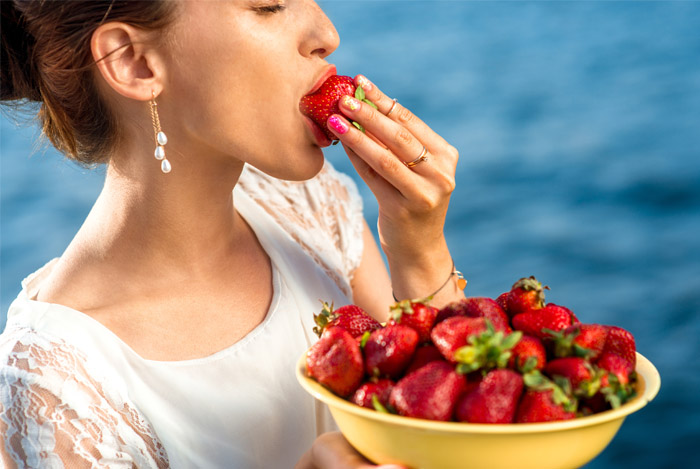
How to Include More Strawberries in Your Diet
Strawberries can be used in drinks and dessert and salads and can enhance any dish with their mouthwatering taste.
They can be used for celebration, for a romantic night, or just as they are.
Strawberries are great for cocktails and can be dipped in anything from chocolate to cream to champagne.
They can be used in making ice cream, popsicles, sorbets, and yogurts.
They can be used in shortcakes and cheesecakes and granola bars and crumbles.
You can add strawberries to your cereal bowl each morning or add them to your custard for dessert.
You can make a semifreddo or a pie or infuse them in vinegar.
You can use them to flavor your iced tea or lemonade.
You can use strawberry jam on toast or biscuits.
You can even use them in savory dishes, such as spaghetti.
There are many ways to eat strawberries.
You just have to be creative, but if you don’t feel creative or energetic, just have them fresh; they are just as delicious without any accompaniments, so you can just wash them and pop them into your mouth.
Just make an active effort to buy and eat more strawberries, which is simple enough.
Make them a part of your regular diet, and you’re good to go.
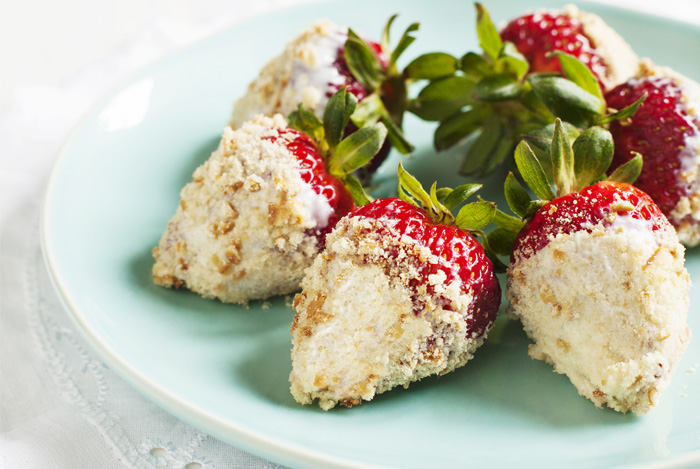
Precautions
Strawberries don’t have many negative side effects, even when you eat more than enough to satisfy nutritional needs.
They still might cause an allergic reaction in some people, as they have an organic compound called histamine, which affects the immune system.
An allergy to strawberries might cause hives, dermatitis, fever, or oral allergy syndrome (70, 71, 72).
Early symptoms are tingling in the mouth, swelling of the lips and tongue, and a rash or blotchy skin. Sometimes, it might even cause nausea, vomiting, abdominal swelling or cramps, or diarrhea.
Something people who buy strawberries need to keep in mind is that commercially grown varieties are often grown in soil filled with pesticide and chemical fertilizers.
Since strawberry plants face threats from bugs and rodents, they are often exposed to chemicals that keep those pests away.
You may wish to buy organic strawberries to avoid ingesting such chemicals.
Conclusion
It isn’t difficult to understand the popularity of strawberries.
This juicy red fruit is not only appealing to your taste buds but also your entire body.
With so many health benefits to offer and so many ways to eat strawberries, you should be rushing to the market to get yourself some of this sublime fruit.
FDA Compliance
The information on this website has not been evaluated by the Food & Drug Administration or any other medical body. We do not aim to diagnose, treat, cure or prevent any illness or disease. Information is shared for educational purposes only. You must consult your doctor before acting on any content on this website, especially if you are pregnant, nursing, taking medication, or have a medical condition.
HOW WOULD YOU RATE THIS ARTICLE?
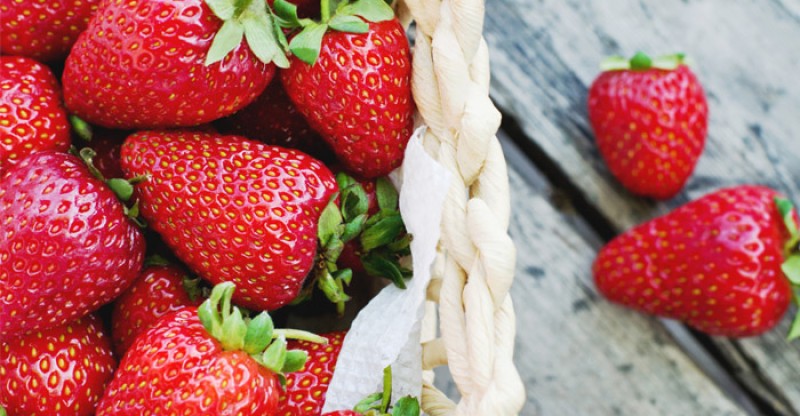


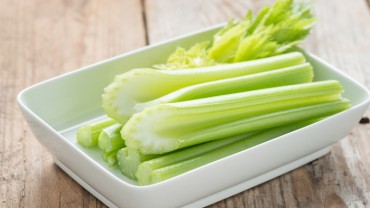



Nice to know that these amazingly tasty berries are so healthy!
Should I eat strawberries before my PMS or during to get the relief?
You write that strawberries can be frozen but will they keep their benefits? Thanks!
Are strawberries leaves edible? I’m not going to eat them, just interested:)